Kedarnath Temple
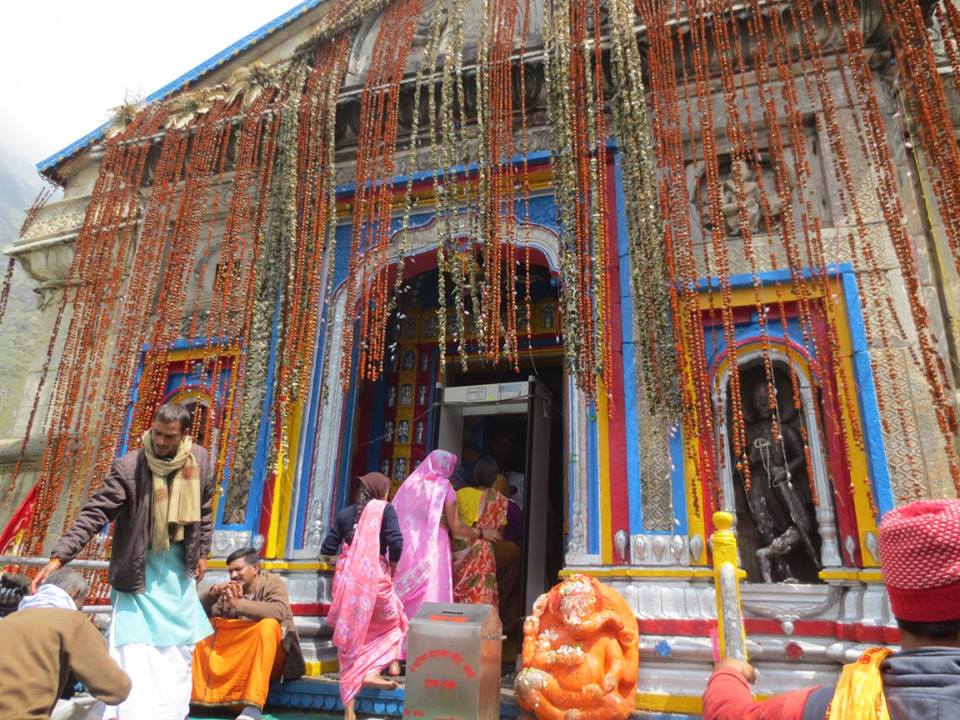
Kedarnath Temple is a Hindu temple dedicated to Lord Shiva. It is on the Garhwal Himalayan range near the Mandakini river in Kedarnath, Uttarakhand in India. The most remote of the four Chota Char Dham sites, Kedarnath is located in the Himalayas, about 3,583 m (11,755 ft) above sea level near Chorabari Glacier, the head of river Mandakini, and is flanked by snow-capped peaks. The nearest road head is at Gaurikund but was the last destination on the Kedarnath route, but with Kedarnath Floods, in 2013 a new trekking route is in the process to be constructed. It will be around 21 km of the trek, which either starts from Sonprayag or Sitapur.
Due to extreme weather conditions, the temple is open only between the end of April (Akshaya Tritiya) to Kartik Purnima (the autumn full moon, usually in November). During the winters the shrine is submerged in snow, so the vigrahas (deities) from Kedarnath temple are brought to Ukhimath and worshiped there for six months. Lord Shiva is worshiped as Kedarnath, the ‘Lord of Kedar Khand‘, the historical name of the region.
In Hinduism, Char Dham Yatra in the Himalayas comprises pilgrimage to Badrinath Temple, Kedarnath Temple, Gangotri, and Yamunotri in Uttarakhand.
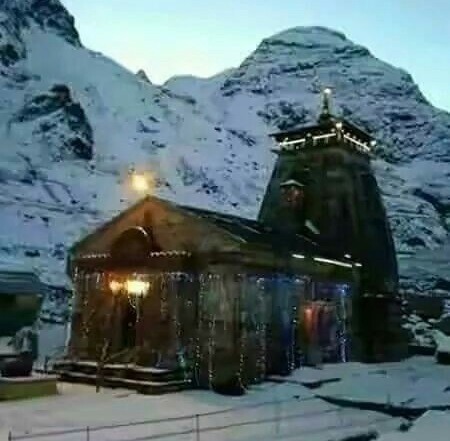
Legend
The temple enshrines a pyramidal Jyotirlingam of Lord Kedar who is none other than Lord Shiva seated here in the form of a cosmic light or Jyotirlingam. The Jyotirlingam here is a self-manifested lingam of Lord Shiva and is the highest of all Jyotirlingams that our country has.
According to one legend, Pandavas after the great battle of Kurukshetra or Mahabharata were guilt struck for having killed their own kinsmen; the Kaurava cousins. In order to get freed from this sense of sin, they came looking for Lord Shiva who alone could absolve their sins. First, they went to Kashi in search of Lord Shiva but learned that the Lord now dwells in the snow wrapped in the Himalayas. So, they proceeded to the Himalayas and entered the region via Haridwar. But Lord Shiva was not in a mind to give them easy ablution from their sins and thus hidden from their sight by taking the guise of a buffalo. The location where the Lord had concealed himself later came to know by the name of Guptakashi. From Guptakashi, Pandavas proceeded towards Gauri Kund where two of the Pandava brothers; Nakula and Sahedeva spotted a unique-looking buffalo. Bheema; another Pandava brother picked up his mace and started pursuing the strange buffalo.
The clever buffalo had hidden its face into a fissure on the earth. Bheema grabbed it by its tail and after a fierce tug of war, the buffalo’s body disintegrated and scattered in directions. Its hump fell in Kedarnath and the Kedarnath temple came into being. The other parts of the buffalo’s body such as arms, face, hair, and navel fell in other places such as Tungnath, Rudranath, Kalpeshwar, and Madhyamaheshwar respectively. These four places along with Kedarnath came to be known as the holy ‘Panch Kedar’. After appearing before the Pandavas, Lord Shiva absolved their sins and decided to reside in Kedarnath as a Jyotirlingam. Thus, came into being the temple of Kedarnath.
Another legend says that when Nar and Narayana; two famed Lord Vishnu incarnations performed rigorous penance before an earthen Shiva lingam at Bharat Khand Badrikashrama, Lord Shiva was pleased and appeared before them. He told them to ask him for a boon to which they replied that they want the lord to reside permanently at Kedarnath in the form of a Jyotirlingam. The lord agreed to their wish and thus enshrined himself in the Kedarnath temple where thousands of devotees flock every year to get their sins absolved with the blessings of the lord.
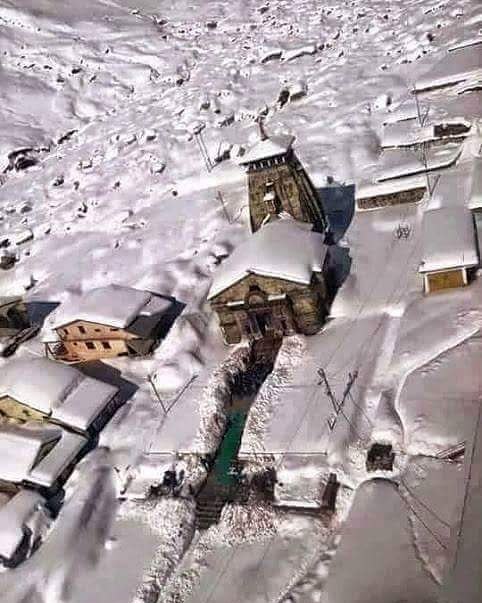
Inside temple
The first hall inside Kedarnath Temple contains statues of the five Pandava brothers, Lord Krishna, Nandi, the vehicle of Shiva, and Virabhadra, one of the guards of Shiva. The Statue of Draupadi and other deities are also installed in the main hall. A medium-size conical rough stone formation is worshiped in the Garbagruha and considered the Sadashiva form of Lord Shiva. An unusual feature of the temple is the head of a man carved in the triangular stone fascia. Such a head is seen carved in another temple nearby constructed on the site where the marriage of Shiva and Parvati was held. Adi Shankara was believed to have revived this temple, along with Badrinath and other temples of Uttarakhand; he is believed to have attained Mahasamadhi at Kedarnath. Behind the temple is the samadhi mandir of Adi Sankara.
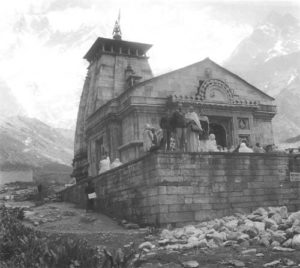
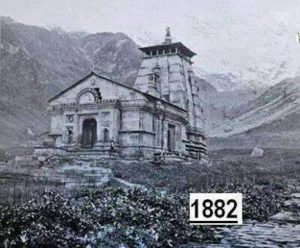
Outside the Kedarnath temple, there is a stone statue of the Nandi bull.
Nandi, the sacred bull that Shiva rides, is another commonly recognizable symbol of Shiva worship. Almost all Shiva temples have the Nandi humped bull reclining on a raised platform and facing the entrance door of the shrine gazing at the Lord in his symbolic Shiva Lingam form.
